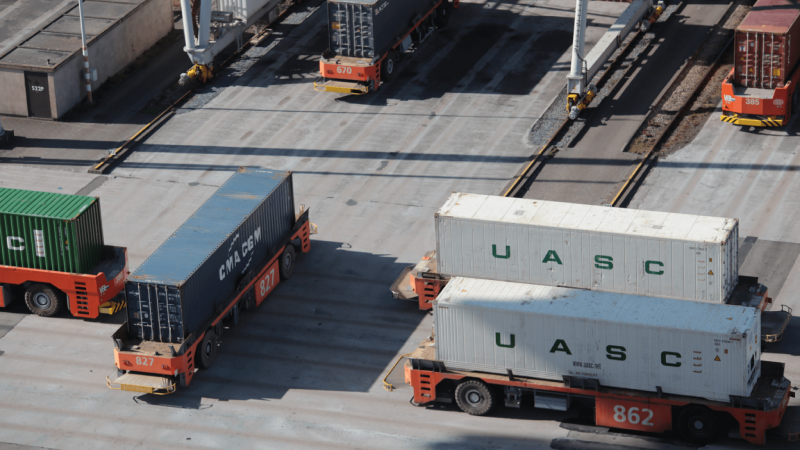The COVID-19 crisis is fueling change in trade at a blistering pace. An example where this acceleration is proving positive is the catalyzing of digital transformation in countries and industries that have been late adopters. The circumstances of the crisis have led businesses and governments to adapt their products and service offerings by embracing digital tools to face the new challenges linked to the virus.
Cargo clearance is one area in which digital tools such as a robustRisk Management System can significantly improve operations by reducing transactional costs to traders and minimizing risk at the borders both in terms of cargo clearance and exposure to physical contact with persons and surfaces. This digital system generates the added benefit of preserving the health of all parties involved in the transaction, which is paramount during a crisis such as the COVID-19 pandemic.
What are Risk Management Systems?
Risk Management is the systematic application of management procedures, practices, and technological tools that provide Customs with the capacity to capture, process, and analyze different types of data to address movements or consignments that present a risk.
Whether these are security risks posed by prohibited or restricted products such as guns or drugs and revenue risks, or both, such as undervaluation, misclassification or smuggling of goods such as alcohol and tobacco, robust Risk Management Systems help Customs agencies to determine which shipments should be inspected, in order to minimize interference with trade flows. In addition, evidence demonstrates that longer cargo processing times that result from physical inspections are particularly harmful to new trade relationships.
However, not all Customs agencies are applying modern risk management-oriented techniques. Mexico and Brazil employ advanced tools within Latin America and the Caribbean (LAC). Globally, only a few other countries, including the United States, Canada, Dubai, Republic of Korea, Japan, Singapore, and New Zealand, are already using nascent tools such as Artificial Intelligence in their Risk Management Systems.
Traditional risk management systems employ tools such as random selection in isolation or apply a basic level of deductive analysis to flag a shipment for examination. For example, a match between the importer recorded in a Manifest (a shipping document listing the cargo, passengers, and crew of the ship) and a historical, non-compliant importer list. This approach does not provide a holistic view of the shipment’s risk profile, and these lists are usually updated too infrequently without automated tools to be effective. On the other hand, random selection used in isolation reduces control to a sort of Russian roulette.
As such, these rudimentary techniques are typically associated with high inspection rates and low levels of accuracy. They represent an inefficient and ineffective allocation of human and technical resources, and compromises the health of officers, contradicting the efforts to preserve life during times of crisis.
On the other hand, sophisticated solutions use multiple levels of analysis consistently across the range of supply-chain data, thereby providing a more effective assessment of risk. A robust set of business rules utilizing updated algorithms can help by directing assessment efforts to shipments, industry sectors, importers, exporters, carriers, and brokers of concern. Machine Learning and Artificial Intelligence can also develop predictive models that automatically adjust the risk scenarios within the system to “self-learn.”
Coupled with Natural Language Processing and Data Analytics tools, this modern approach facilitates legitimate trade. It shifts low-risk transactions to be examined after the goods have cleared the port (post-clearance audit), reducing unnecessary delays. This approach also allows minimal human resources at the border to focus on high-risk shipments that pose real Customs threats.
How does a modern Risk Management System operate?
Using the example provided earlier, the initial risk score may be high due to a previous minor contravention by the importer. However, when the system runs various levels of analysis on the data utilizing multiple tools, the risk score is adjusted downwards. The combined overall score may conclude that the shipment poses no real threat to revenue, security, or safety.
This system would eliminate an ineffective full physical inspection at the port of entry or perhaps would lead to a reroute of the shipment to a non-intrusive inspection instead, depending on the adjusted risk score and the type of commodity.
A modern Risk Management System allows border agencies to minimize manual inspections and increase interdictions. In other words, it increases assertiveness. Intelligently combined with non-intrusive inspection equipment and monitoring systems, these tools contribute to reducing the number of persons required to be present at the ports of entry while maintaining security at the borders. These tools also complement other trade modernization initiatives such as smart ports, for which the IDB has developed a toolkit to measure a port’s level of evolution.
Supporting Risk Management System in Latin America
Such tools are even more critical at a time when the safety and security of a country are dependent on curtailing contact with people and surfaces. In Trinidad and Tobago, The Bahamas, Argentina, Peru, Nicaragua, Costa Rica,and Panama the Integration and Trade Sector of the IDB is working closely with Customs agencies and various Ministries to support investments in risk management systems, consistent with the mandate to reduce the time and cost of clearing goods and ensure the security of operations at ports of entry.
Digital transformation is at the core of these interventions. Paperless processes, risk management, cargo traceability, non-intrusive inspection technologies, and systems interoperability are examples of activities the IDB is helping finance and implement in ports of entry in LAC countries. Advancing such efforts would go a long way toward improving the preparedness level in each customs administration to operate in crisis events, like a pandemic, in the future.


